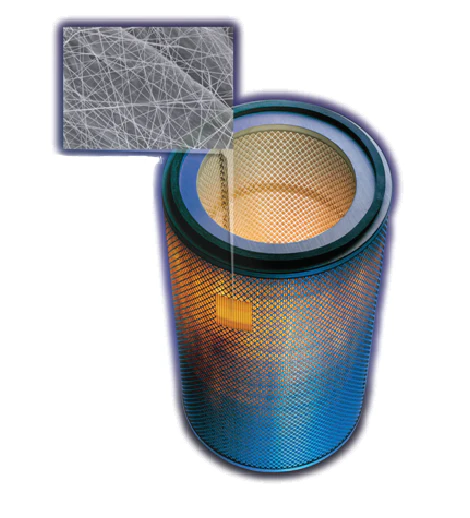What You Need To Know About Dust Collector Filter Maintenance
Dust collector filter play an important role in any manufacturing environment. They help to reduce the amount of dust and dirt that accumulates, which in turn helps to improve workplace safety. But like any machine, dust collectors can also become clogged over time. This can lead to reduced air flow and even a potential fire. In this blog post, we will discuss the basics of dust collector filter maintenance and how you can keep your system running smoothly. We will also provide tips on how to detect and fix common problems.
What are Dust Collector Filter?
Dust collectors use filters to trap dust and other particles that are produced when the machine operates. The filter should be replaced every six months, or when it shows signs of wear or damage. When replacing the dust collector filter, make sure to remove all the old material, including the foam liner. If there is debris blocking the filter's intake, you may need to use a plunger to dislodge it. Once the debris has been removed, wash the filter with warm water and a mild soap. Allow it to dry before replacing it in the dust collector.
How Dust Collector Filter Maintenance Affects Your Home’s Air Quality
Dust collector filters can play a significant role in improving air quality in your home. If not maintained properly, dust collector filter can trap dust, dirt, and other allergens that can cause respiratory problems in people living in the home. Proper filter maintenance can help keep your home’s air quality at optimal levels.
Here are some tips on how to maintain your dust collector filter:
1. Check the filter’s condition biweekly: You should check the condition of your dust collector filter biweekly. This will help you determine when it is time for a replacement. Look for evidence of wear and tear such as tears or cracks in the fabric. The more damage there is, the sooner it needs to be replaced.
2. Clean the filters regularly: Clean the filters regularly using a mild detergent and warm water. Make sure to rinse them thoroughly before replacing them on your dust collector.
3. Replace the filters when they start to show signs of wear: If you notice any signs of wear or damage on your dust collector filter, replace it as soon as possible. Filters that are less than six months old should be replaced every three months while those older than six months should be replaced every six months.
When To Replace Dust Collector Filter Media
Dust collectors are a valuable tool in any workplace, but like any machine, they need to be maintained to keep them running smoothly. The filter media in your dust collector is one of the most important components to keeping it working properly. When to replace dust collector filter media can vary depending on the model and make of your dust collector, but there are some general guidelines that can help you stay on top of your collection maintenance.
Conclusion
Regular filter maintenance is essential to keeping your dust collector running optimally. By following these tips, you can keep your dust collector functioning at its best and minimize the chances of damage from Dust or other particle-related problems. Additionally, by knowing when to schedule regular filter replacements, you can prolong the life of your dust collector filters and reduce your overall dust collector maintenance cost.



Comments
Post a Comment